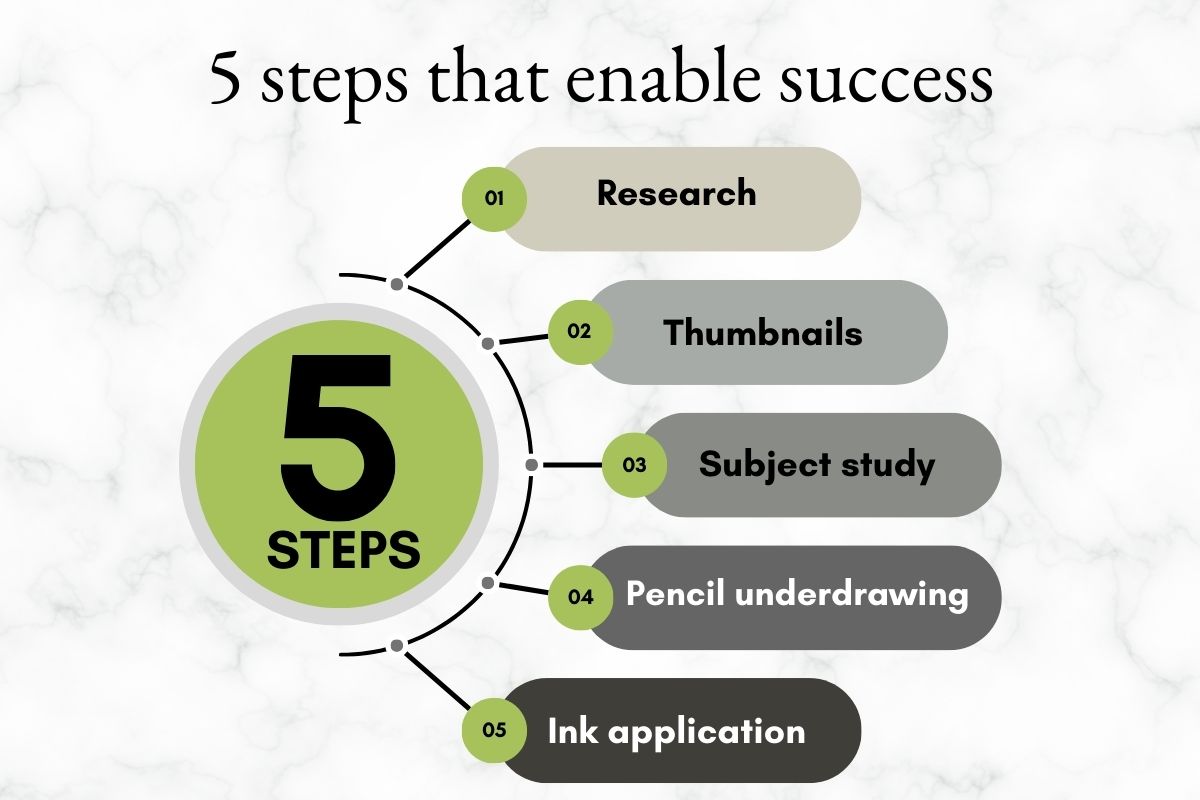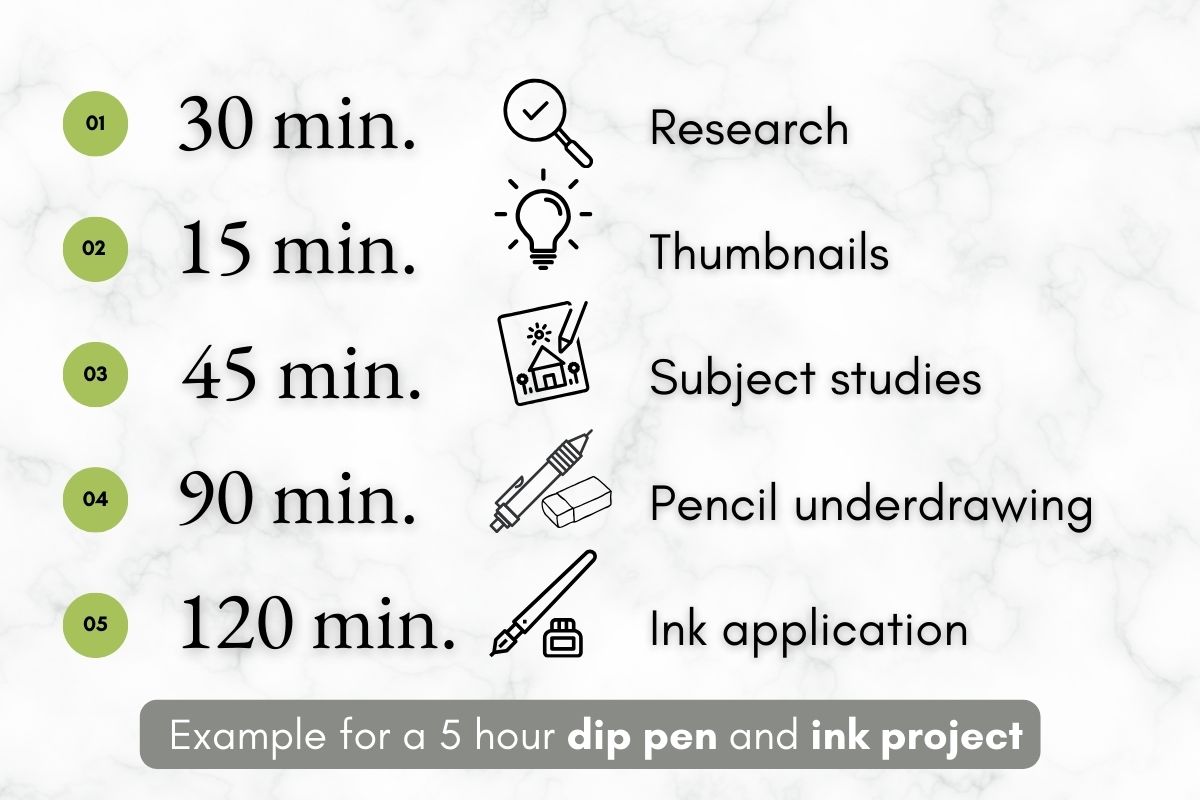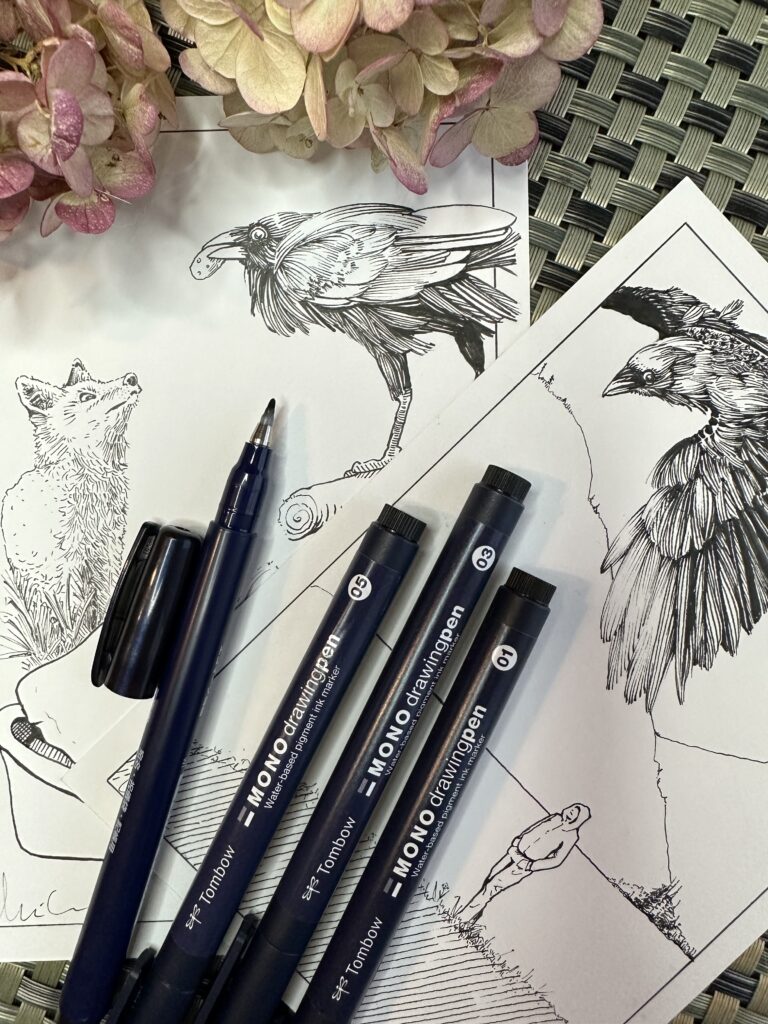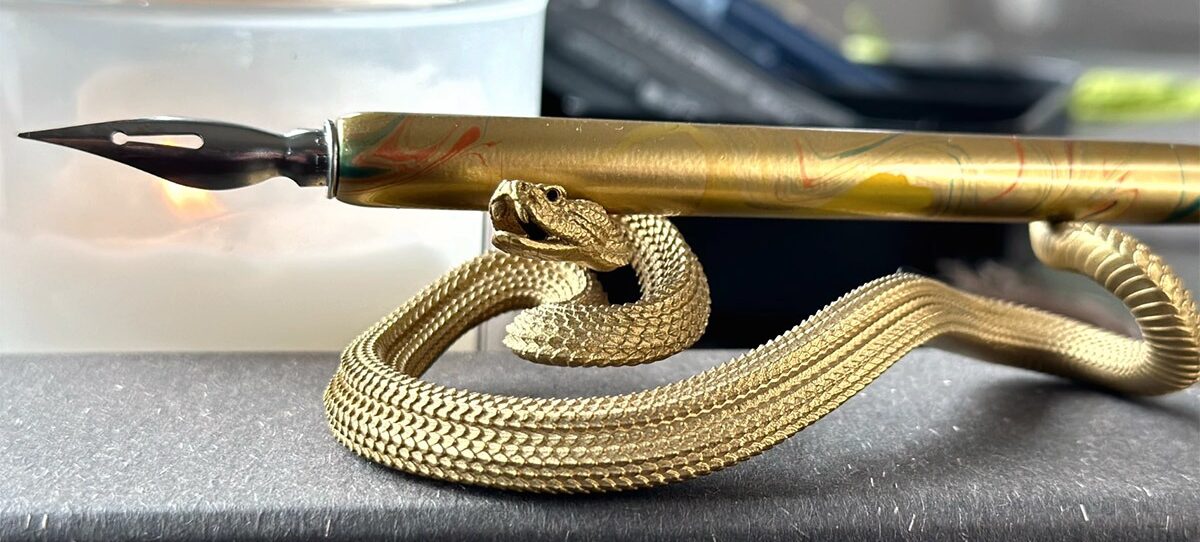What You Want for Drawing in Pen and Ink
Recommendations on tools and resources to get the desired results.
Where would you like to start?
Sketching
References, Courses, Books, Drawing Supplies
Inking
Ink and Paper Supplies
Studio
Artist Studio Equipment

How to Choose Supplies
Gain confidence with your inking projects by having a plan.
Determine what you’ll need to complete each stage of your plan. There are five key stages that enable success:
- Research
- Thumbnails
- Subject Study
- Pencil Underdrawing
- Ink Application

Disclosure: Some of the links on this page are affiliate links. I earn a reward or small commission when you use those links to make a purchase. Read more about the Affiliate Disclosure on the Terms page.
Sketching
Recommended Resources for Your Studies, Practice, Research, and Sketching.
Top pick for pen and ink books:
- Rendering in pen and ink by Arthur L. Guptill
- Pen and ink technique by Frank Lohan
- Pen and ink drawing, a simple guide by Alphonso Dunn
Each resource offers similar content for developing techniques, selecting materials, and practicing exercises.
Arthur L. Guptill’s book is comprehensive, with 300 illustrations from famous masters. The instructional tone is a bit dated however the information is still relevant today.
Frank Lohan’s book was written in the same era. It also outlines useful step-by-steps but the rendering quality is comparatively less impressive than Gutptill’s.
Alphonso Dunn’s guidebook is modern and although intended to be purchased with its companion workbook, is fine as a standalone resource.
If I could keep only one of those books, it would be Guptill’s because it’s a classic.
Where to find good references:
- Royalty-free photo references: Pixabay and Unsplash
- Sketching references: Line of Action (poses) and AllAboutBirds (birds)
- Pen and ink masters: my Pinterest Board
Where to take a course:
- Skillshare (1 Month Free Trial)
- Udemy (Take my Dip Pen Course)
- Proko
- Domestika
- Watts Attelier
- The Virtual Instructor
For sketching thumbnails and doing exercises:
I use medium-soft graphite pencils (HB, B, 2B) on fine-toothed paper. I prefer a smooth paper to a rough porous surface.
The smoother texture is gentler for fineliner pens and markers which gives the option to practice ink strokes directly on top of pencil doodles or practice sketches.
For studies and technique practice:
Basic sketching supplies:

Vellum paper is perfect for tracing over sketches to explore linework options. I also trace masterworks as studies and typically use fineliner pens at those stages of the process. My go-to liners are the Tombow water-based pens because their tip is softer than competing brands. A softer tip simulates the feeling of a dip pen for creating line-weight variety with one stroke. My next choice is Staedtler Pigment Liners.
Inking
Recommended Supplies for Your Inking Projects.
Paper selection is critical for the best outcomes inking your final artwork. Bristol or hot press papers are preferred if using liquid ink. If inking with pens use a paper labelled for “pen and ink” or “markers”.
For beginners, I recommend a Bristol vellum finish because the tooth provides stability and is more forgiving. Advanced inkers tend to opt for a Bristol smooth finish.
I like the Moleskine Arts sketchbooks for experimenting with mixed media (wet and dry). For a more robust toothy version, I use my Handbook Journal series made by Speedball Art.
It’s important to have a clean inking surface. To keep graphite residue to a minimum, I use a 2mm mechanical pencil with a sharp H or 2H lead and a kneaded eraser to lift marks without smearing the paper surface.
Paper and sketchbooks:
Pencils and erasers:
Speedball super black India ink is pigment-based and my top choice for drawing. It has a balance of viscosity and drying time that works well with dip pens and brushes.
To make the best selection of dip pens for your project, level, and style, read my dip pen guide. If I could keep only one dip pen, I would pair a Tachikawa t-40 pen holder with a Speedball Hunt 512 bowl nib. The bowl nib is one of the most versatile, beginner-friendly nibs.
For filling solid blacks and thick line weights, I use a watercolor brush with pigment-based India ink. My favorite is the Winsor & Newton Series 7 Kolinsky Sable Brush 02. If you’d prefer a brush pen, look for refillable brands such as the Pentel Arts Portable Pocket brush pen.
To see the complete list of the supplies I use for pen and ink projects, visit the FAQ page.
Studio
Recommended Artist Studio Equipment.
The ideal home art studio setup allows you to easily adjust your equipment so that you can draw from various angles and positions. Avoid wasting time looking for your stuff by having accessible organizers and storage.
Top tip: standing on an anti-fatigue mat and using proper lighting have positively impacted my creative stamina.
Selling your art from a website or at conventions? See my recommendations for display and packaging supplies in the article: An Illustrator’s Guide to Artist Alley.











